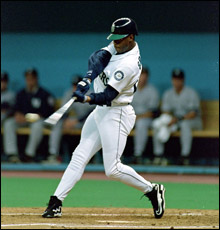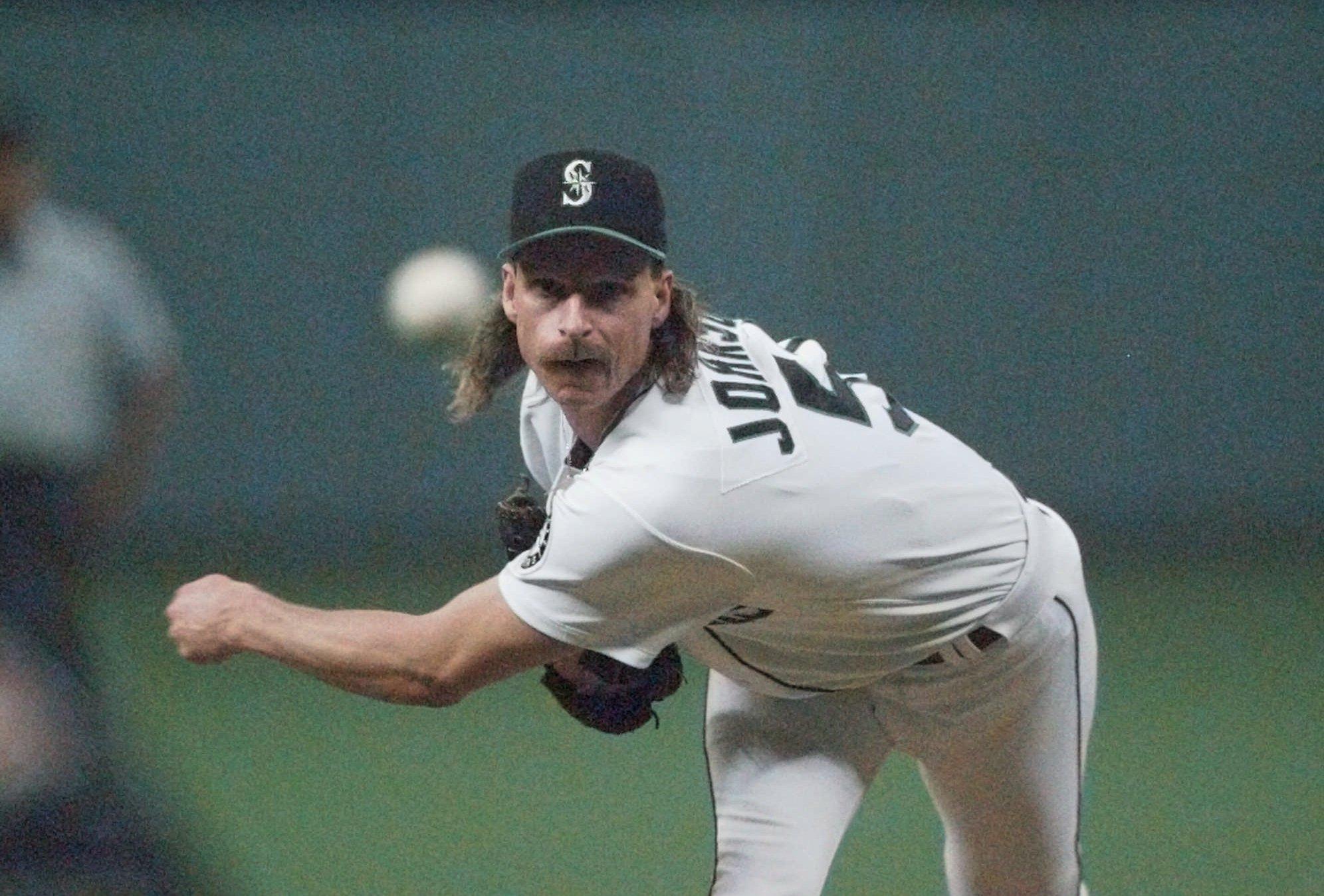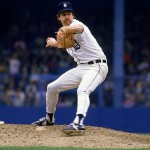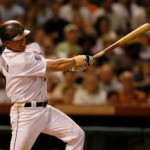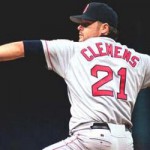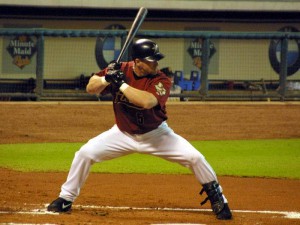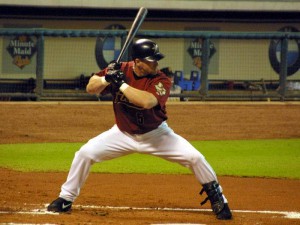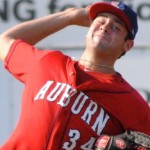
Lucas Giolito still leads the line of the Nats 2012 draft class. Photo unk via federalbaseball.com
(Useless blog information: this is my 900th post! And we’ve had nearly 7,500 comments on those posts; that’s fantastic. )
The next in a series: previously we reviewed the 2015 season stats for the 2015 draft class, 2014 draft class, and the 2013 draft class. Like with the 2013 post, this one was easier to do thanks to having done the 2012 guys back in 2013 time-frame. Is it worth going back one or two more draft classes at this point? Maybe not; the 2012 draft class has mostly already been Rule-5 exposed, a good benchmark for prospects to make it or break it in terms of advancement or resignation as “org guy.” I have gone back one more class to 2011 and that’s it, so one more in this series after this.
Web links to use while reading:
- Stats are pulled from milb.com and/or fangraphs.com; put the player name into the search bar to get his seasonal stats
- The MLB Draft Tracker (which I believe is the best draft tracker out there) is the best place to get draft class information.
- The Big Board and the Draft Tracker are the goto resources for prospects for any Nats fan.
- Baseball-reference.com’s draft database for Nats 2011 class.
- My working XLS in Google for all this data (cut-n-pasted at the bottom).
- TheBaseballCube.com for really obscure stats for players, like college stats for these upper round 30s guys.
Without further ado:
Round 1: (#16 overall) Lucas Giolito HS RH Starting pitcher: 7-7, 3.15 ERA across two levels, starting at HighA and moved up to AA. 131/37 K/BB in 117 IP (21 “starts”) with 1.96/3.18 fip, and .352/.341 babip splits between HighA/AA. A fantastic season for the newly-turned 21-yr old, who dominated HighA before moving up and holding his own in AA for the last two months of the season. All the pre-season talk about how he was going to have “no innings limits” was bunk; he was kept in XST until the first week of May and routinely skipped starts so as to extend him through the whole season while keeping his innings year-over-year increase just below the magical 20% mark (98 IP in 2014, 117 in 2015). He’s now routinely named as either the best or the 2nd best (behind LA’s Julio Urias) pitching prospect in all of baseball. Not much else to say. I’m guessing he starts 2016 in AA, moves to AAA and may even get tapped once he surpasses the Super-2 deadline as an injury fill-in starter in the majors. Look for him to get about 140 innings in 2016 all told (that’s 20% bump from his 2015 117 total). Trending Up.
Round 2: (80) Tony Renda, Coll Jr 2B: .267/.333/.340 in Harrisburg with 15/19 K/BB ratio and 13 SBs in a little less than a half a season in AA before he was traded to the Yankees on 6/11/15 for David Carpenter. Renda had progressed nicely in the system as a defense and speed-first second baseman, but in the immediate seems like he was blocked by Wilmer Difo, perhaps the rising of Chris Bostick and the presence in the majors of three or four different guys who can play an adequate second base. So the team flipped him for something they needed; reliever depth.
Round 3: (111) Brett Mooneyham, Coll Jr LH starting pitcher: was 0-2 with a 6.41 ERA in 19 ineffective innings for LowA Hagerstown before the Nats finally cut the cord and released him on 6/3/15. Mooneyham was in Low-A for the third successive season, having failed to make the cut in Potomac in each of 2013 and 2014. You’d have to say that he’s one of the more higher-profile drafting failures of the Mike Rizzo era. Or maybe not; the team had to go over-slot to sign Giolito and may have skimped for the rest of the draft.
Round 4: (144) Brandon Miller Coll Sr Corner OF: .226/.301/.421 in 59 games with Potomac before voluntarily retiring on 7/10/15. Despite showing some power (he hit 20 homers in the 2013 season), he never really solved HighA and made way in the Potomac outfield for some rising DSL grads.
Round 5: (174) Spencer Kieboom, Coll Jr C: Slashed .248/.344/.346 with 30/36 K/BB in 246 ABs with Potomac, which were incremental steps back from his great low-A numbers in 2014. He missed a good portion of the season with injury (concussion) and is currently playing in the Arizona Fall League to make up for it. He was starting to get some notice in the organization, appearing in the tail end of top-30 prospect lists. Despite his step back in offense, Kieboom has taken a huge step forward in terms of his defense, his play-calling and pitch-framing. Scouting reports on him are glowing in this regard, with most projecting him at worst as a backup catcher in the bigs because of his defensive capability. I think he starts 2016 in AA with an eye towards getting his bat back on track, and if he keeps producing he could soon be a viable alternative to the current catching tandem in the majors. Trending up.
Round 6: (204) Hayden Jennings, HS OF/CF: Released in May 2014 after two years in the GCL with big K numbers.
Round 7: (234) Robert Benincasa, Coll Jr. RH relief pitcher: Just 4 IP for Harrisburg this year until suffering a season-ending injury. He made the AA bullpen out of spring (which is where he ended the 2014 season) and seemed to be in a decent spot but got almost no playing time. Minor league relievers generally don’t get a lot of love from prospect hounds, but in a system where an able-bodied RHP who could throw strikes would have been nice to have in August and September, there’s still opportunity for Benincasa going forward. Trending Steady if he’s healthy, looking at a ST2016 release if not.
Round 8: (264) Stephen Perez, Coll Jr. SS: slashed just .209/.302/.280 with 87/59 K/BB in 435 ABs between Potomac and Harrisburg. 2 homers, 16 steals. Perez broke camp with Harrisburg but couldn’t cut it, hitting just .130 in April before getting dumped back to repeat High-A. In 1300+ career minor league ABs he’s now hitting just .233 and doesn’t seem like he’s long for the organization. As mentioned in this space before, the Nats drafted a ton of college middle infielders in 2015 and Perez may struggle to keep his slot given what’s expected to rise up. Trending down.
Round 9: (294) Derek Self, Coll Sr. RH relief pitcher: 4-5, 3.56 ERA with 45/15 K/BB in 60ip. 3.71 fip, .291 BABIP in Potomac. Broke camp as a member of the AA bullpen but got hit and was dumped back to high-A, where he spent most of the season. This is the third straight year he’s been in Potomac as a college senior draftee; odds are there won’t be a 4th. He may break camp with a full season squad in 2016 but may fall victim to a numbers game once the short-season guys start pushing for promotions. Trending down.
Round 10: (324) Craig Manuel, Coll Sr C: slashed just .206/.276/.242 between three levels but mostly with Potomac. He had just 165 ABs on the year as he served as the backup catcher in High-A. Its his third straight season of essentially being an “old for the level” backup catcher who has struggled to hit the Mendoza Line since leaving Low-A. Its hard to read the tea-leaves on catchers since they’re so scarce, so I won’t summarily pass judgement that Manuel’s time is about to come to an end. He could very well be the backup catcher again in Potomac next year. He is a local guy (born in Rockville, MD though he went to HS in Florida and college in Texas), so perhaps he enjoys playing in the DC area. Otherwise, just based on his offensive numbers I have to say he’s Trending Down.
Round 11: (354) Brian Rauh, Coll Jr RH starter/reliever: 4-7, 3.39 ERA with 84/24 K/BB ratio in 101 innings (18 starts) across *four* different levels. 2.61/4.95 fip in Potomac/Harrisburg where he spent the most time this year. Rauh had a nice tour of the system this year, starting in High-A (he was the #2 opening day starter), getting hurt, doing some rehab in the GCL, then working his way back up the chain from Low-A to High-A to AA. He ended the year in Harrisburg’s rotation, for what its worth. He didn’t entirely impress at AA but had an incrementally better season in High-A. My guess is that he starts the 2016 season in the AA rotation, but he has to show he’s worthy in AA. Trending Steady.
Round 12: (384) Carlos Lopez, Coll Sr 1B: Slashed just .138/.265/.241 in 10 games in Hagerstown before being released on 6/30/15. This was the third straight season that Lopez featured in Hagerstown, having spent the first two months of the season in XST after getting beat out for the 1B job in the spring. Eventually there just was no more room for Lopez, with uber prospect Jose Marmolejos-Diaz soon taking over at 1B in Hagerstown and slugging 11 homers in a half-season.
Round 13: (414) Elliott Waterman, Coll Jr LH reliever: Struggled in two Short-A stints and was released on 3/15/14 prior to the beginning of the 2014 season when he couldn’t break into a full-season bullpen.
Round 14: (444) Jordan Poole, Juco-2 corner OF: Similarly to Waterman above, Poole struggled to hit in two seasons shuttling between Short-A and GCL, and the Nats released him on 3/14/14 when he wasn’t set to make a full season roster.
Round 15: (474) Brandon Smith, OF: Didn’t sign. Attending Division II Grand Canyon University, where he remains today. He hit a robust .348/.402/.478 for them this season but was not drafted as a draft-eligible junior. Maybe the Nats take a flier on him in a late round since they love doing re-drafts on late-round HS picks.
Round 16: (504) Ronald Pena, Juco-2 RH starter/reliever: threw just four rehab innings in 2015, spending the entire season on the Potomac Disabled List. He was coming off a season where he had a 5.96 ERA in High-A and needed 2015 to show he could make the jump. My guess is that he’ll get another shot at being the Potomac swing-man in 2016 but he may struggle to make the squad, given the huge number of college arms pushing into the system year after year. Trending Down.
Round 17: (534) Blake Schwartz, Coll Sr RH Starting pitcher: 0-2, 5.87 ERA in 3 Potomac starts and then he called it quits, officially retiring on 4/24/15. Schwartz was *so good* in 2013 for Potomac (11-4, 2.65 ERA) then struggled in AA before getting hurt in 2014 and missing half the season. I thought the retirement was surprising; maybe his 2014 injury just killed his arm and with it his career. Too bad; he was looking like a fantastic low-round find.
Round 18: (564) David Fischer, Coll Sr RH reliever: Released on 7/3/14 after bouncing around the system for a couple of years.
Round 19: (594) Bryan Lippincott, Coll Sr 1B: Retired ahead of the 2014 season after one decent season in Short-A.
Round 20: (624) James Brooks, Coll SR SS/3B: Released May 2013; he was a senior sign who played last season mostly in the GCL, save for a 2 week stretch where he went 1-32 in Short-A.
Round 21: (654) Austin Chubb, Coll Sr C: Released ahead of the 2015 season after struggling to a .221/.299/.324 line in Hagerstown in 2014. Signed as a MLFA with Los Angeles and bounced around their farm system this year, missing huge chunks of the season with injury. Backup Catchers can live forever.
Round 22: (684) Will Hudgins, Coll Sr RH reliever: Suddenly retired 7/12/13 per his Twitter account.
Round 23: (714) Casey Selsor, Coll Sr LH Starter/Reliever: Posted a 4.29 ERA in ShortA in 2014, then released on 3/20/14.
Round 24: (744) Kevin Dicharry, Coll SR RH pitcher: released 7/1/13
Round 25: (774) Freddy Avis, RHP: didn’t sign. Attending Stanford, where in 2013 he appeared in exactly one game and pitched 2 innings before suffering a season-ending injury. That injury never got better and he retired from baseball altogether in March of 2015. Shame.
Round 26: (804) Skye Bolt, RHP: didn’t sign. Attended UNC, had an excellent college career and was a 4th round pick in 2015 by the Oakland A’s. He kind of reminds me of our 2015 pick Andrew Stevenson frankly; kind of an odd swing, defense-first speedy outfielder with limited power.
Round 27: (834) Cody Poteet, RHP: didn’t sign. Attended UCLA and got drafted (like Bolt) in the 4th round of the 2015 draft by the Marlins.
Round 28: (864) Hunter Bailey, Coll Sr SS/2B: released May 2013.
Round 29: (894) Leonard “LJ” Hollins, Juco RH reliever: released 7/2/14 after struggling for half a season in Hagerstown.
Round 30: (924) Robert Orlan Coll Jr LH Starter: 3-1, 3.00 ERA with 85/28 K/BB ratio in 72 relief IP between LowA and HighA. Orlan bounced between Potomac and Hagerstown all season, ending up in HighA with pretty good numbers in a “more than a loogy” role. Especially impressive is 85 Ks in just 72 ip. He’s older for these levels, inarguably, but could put himself in a good position by continuing to succeed in 2016. I see him in the Potomac bullpen again with an eye towards a June promotion to AA when the short-season promotions come due. Trending Steady.
Round 31: (954) Michael Boyden Coll Sr RH reliever: Released Jan 2014 after struggling for two years in Rookie ball as a college senior sign.
Round 32: (984) Michael Mudron, Coll Sr LH reliever: Released Jan 2014 after posting a 6.82 ERA in Short-A in 2013.
Round 33: (1014) Mike McQuillan, Coll Sr 2B/3B: Released 3/26/15 after hitting just .207 in Potomac last year, likely losing out on a numbers game.
Round 34: Jake Jefferies, 2B: didn’t sign. Attended Cal State Fullerton and subsequently drafted again by the Nats in the 39th round in 2015.
Round 35: Corey Bafidis, LHP: didn’t sign but Washington picked him in 2013.
Round 36: Max Ungar, C: didn’t sign. Attending Division III Denison, where he did not seem to even be playing.
Round 37: Tyler Watson, LHP: didn’t sign. Attended Kansas U for a year, then bounced to McLennan Community College in Waco, TX and and got drafted by the Angels in the 38th round of the 2014 draft. This is *not* the same Tyler Watson, by the way, that the Nats drafted in the 2015 draft.
Round 38: Jarred Messer, RHP: didn’t sign. Pitched the last two years with the Kansas City T-Bones in the independent American Association
Round 39: Mitchell Williams, C: didn’t sign. Attended the Marion Military Institute in Alabama, for which I cannot find any current stats.
Round 40: Ricky Gutierrez, CF: didn’t sign. Presumably playing football for U-Conn, as per the Draft Tracker.
Trending Summary:
- Trending Up (2): Giolito, Kieboom
- Trending Steady (3): Benincasa, Rauh, Orlan
- Trending Down (4): Perez, Self, Manuel, Pena
- Did Not Sign in 2012 (11): Smith, Avis, Bolt, Poteet, Jefferies, Bafidis, Ungar, Watson, Messer, Williams, Gutierrez
- Released/Retired (19): Mooneyham, Miller, Jennings, Lopez, Waterman, Poole, Schwartz, Fischer, Lippincott, Brooks, Chubb, Hudgins, Selsor, Dicharry, Bailey, Hollins, Boyden, Mudron, McQuillan
- Traded (1): Renda
Executive Summary
Three years onward, there’s just 10 of the 40 names left active somewhere in the minors. 11 never signed and another 19 have been released or retired. We cashed in Renda on a middle reliever who subsequently got hurt, and this class has one of the best 2 or 3 prospects in the game. Otherwise … there’s just not much there. It seems likely that the Nats 2012 class is going to end up producing just two MLB players; a near Ace and possibly a backup Catcher. Maybe one of the trending steady middle relievers can make a run ala Aaron Barrett. Otherwise, is this class a disappointment?
